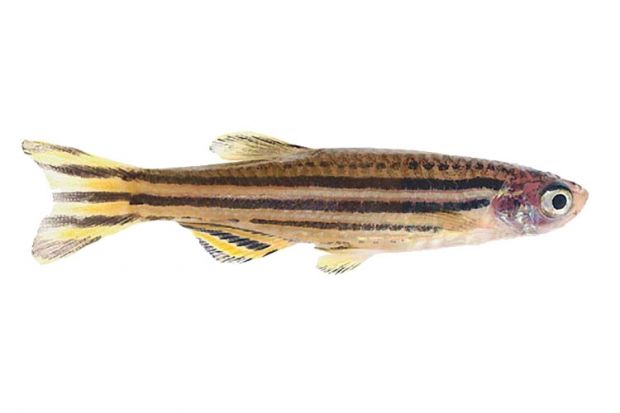
The absence of natural, individual variation, both genetically and environmentally induced, in model organisms is hardly representative of the real world
A study published in the British Medical Journal last year commented that only one in four young men has “optimal” sperm quality: the rest produce ejaculates with lots of duds. Is poor sperm quality the fault of tight underpants or a hot laptop resting on the testes? Does it jeopardise our future?
Before we start worrying about what medical science can do to rectify this apparent deficiency, we should think about it from another perspective, look at sperm quality in other species and ask whether it varies according to their various mating systems. Such comparisons can tell us what we might expect human ejaculate quality to look like.
It turns out that in those species with promiscuous females, males need high-quality ejaculates so that their sperm have a chance of outcompeting those of their rivals. In contrast, in species with monogamous females, males can manage with low-quality ejaculates. Chimpanzees are famously promiscuous and have superb sperm; gorillas on the other hand are like us in that female promiscuity is low and males get by with ejaculates that contain relatively high numbers of duds. So, poor-quality sperm is just the way we are, but this becomes apparent only after comparing ourselves with other species and doing so within a conceptual framework that allows us to interpret the comparisons.
This sperm example illustrates the importance of knowing how and why closely related animal species can differ from each other. Currently there are two very different research and training approaches to such biological variation in the life sciences.
In the first (bio)medical approach, research and training tend to treat variation as a nuisance, and the focus is on commonality. Biomedical degrees rarely provide students with any sense of the diversity of life or the evolutionary relationships between different types of organism. Being different is considered equivalent to being deviant, and the benchmark for deciding whether something is worth studying or not is how relevant it is to humans. Biomedical teaching and research on non-human animals typically focuses on a handful of “model species” – viewed as surrogates for humans, or at best as representative of the taxon to which they belong.
Remarkably, model organisms in practice have not been chosen with either of these qualities in mind. Instead, they have been selected usually because of their rapid development, short lifespan, insensitivity to their environment and the ease with which they can be reared in the laboratory. On top of this, many model organisms have been “standardised” by intense selective breeding specifically aimed at reducing variation among individuals. This uniformity is important in that it helps with the replication of experiments and reduces the number of animals that need to be studied. But the absence of natural, individual variation, both genetically and environmentally induced, is hardly representative of the real world.
The use of model organisms – mainly Drosophila flies, mice, rats, chickens, zebra fish, yeast and the nematode worm C. elegans – has yielded great benefits and as a result we now know much more about many fundamental and highly conserved areas of cell biology and biochemistry. But this understanding has come at a price: knowledge has been canalised. Minimising environmental effects means that there is an overemphasis on genomic effects and an almost complete lack of appreciation of how variation is generated by environmental factors, why this is important and what it can tell us.
The other approach to biology is one that is best represented by the discipline of zoology. Indeed, zoology is perhaps now the only discipline in which students are taught about the nature, causes and consequences of variation among and within species. It considers animals in the context of their environment. Zoologists are excited by variation, and want to know how and why animals differ at the cellular, individual, population and species level. Natural selection is the conceptual framework that links variation in biological traits with variation in the environment.
All species have an ancestral legacy that shapes their current body form, physiology and behaviour, but zoologists also recognise that both within and among species, animals differ in many important ways. Consequently, to a scientist with a zoological background, the idea that the fly Drosophila melanogaster is representative of the biology of all arthropods or that a small-bodied, short-lived mammal such as the mouse is a good surrogate for a large-bodied, long-lived mammal such as the human seems ridiculous.

All life science degrees should include training in the diversity of life and the pivotal role that variation plays in biology. Students need to know that genes alone do not make the organism
The fact that animals are not simply a product of their genes is being rediscovered by molecular geneticists as the focus of molecular biology moves upwards from genes to proteins and – most recently – to the small molecules that drive cell function. With this comes renewed interest in the role of the environment in shaping bodies and behaviour, and the insights we gain from comparing different species.
This has led to the emergence of new disciplines such as “eco-devo”, which puts the environment back into developmental biology, or “biogerontology”, which recognises that, by studying animals that grow old at different rates, we can learn much more about how and why ageing occurs. Indeed, mainstream ideas about the causes of ageing, largely derived from biomedical research, have been knocked on the head by the recent realisation that birds, with their high metabolic rates, high body temperatures and fast growth – all traits thought to accelerate ageing – actually live on average three times longer than mammals of the same size.
To meet the intellectual challenge of moving from genes and their products to the complexity of whole organisms, we need biologists who understand and appreciate variation, why it matters and how it is generated. It is tragic that comparative biology, particularly comparative physiology, has all but disappeared from many university life science courses, just when we need it most. Comparative research has also been dwindling. One physiologist told us recently: “Everyone these days is a molecular biologist, a molecular geneticist, obsessed with the misapprehension that sequencing genes means that we understand whole organisms. Genes tell us a lot about why some things go wrong – but much less about why different kinds of organism are the way they are.”
The study of zoology provides the appropriate biological perspective on variation, and thankfully it remains a popular undergraduate course, with some 32 UK universities offering such degrees. In contrast, botany, which should be the plant equivalent, seems to have withered as a discipline. Degree courses in some kind of “plant science” are offered in only nine UK institutions and the uptake is small. In some ways this is hardly surprising since the botanical focus until recently has been almost exclusively on the molecular biology of the model plant Arabidopsis.
Whole-organism botany is not dead, however, but it has been forced underground and survives disguised as environmental science or something similar. What is needed, of course, is more “real” plant science – botany that celebrates the extraordinary and wonderful diversity of plants. If we are to solve the issue of food security, we need biologists that know about whole plants as well as their genes. Indeed, plant science really needs to be part of a broader biological perspective where the similarities between plants and animals comprise an integrated course of study.
Perhaps thanks in part to Sir David Attenborough, it is widely appreciated that studying zoology provides the expertise and manpower that will help biologists to conserve the world’s species and diversity. But there is now much less appreciation of the fact that understanding how and why species and individuals vary makes a vital contribution to all areas of the life sciences, including biomedicine. It was not always so. Appreciation of the range of fundamental biological concepts embraced by the zoological approach, and the value of comparative studies, led Nobel laureate Sir Peter Medawar to describe zoology as “the best fitted of all the science subjects to provide its students with a liberal education”.
Medawar’s aphorism continues to be true today and variety is indeed the spice of life. Variation is the key for linking together genotype and phenotype, and as our sperm example illustrates, for helping us understand why some of our characteristics take the form they do. All life science degrees should include training in the diversity of life and the pivotal role that variation plays in biology. Students also need to know that genes alone do not make the organism. This will help not only in making the appropriate comparisons among ourselves and other species but also prompt research that may uncover the clever tricks that animals with different physiologies and life histories have evolved – such as combating infection, regenerating nerve tissue and the secret of slow senescence. Funding agencies also need to encourage researchers to look at a much broader spectrum of species than the handful of model organisms currently used.
Differences have as much, if not more, to tell us about life as similarities.
Register to continue
Why register?
- Registration is free and only takes a moment
- Once registered, you can read 3 articles a month
- Sign up for our newsletter
Subscribe
Or subscribe for unlimited access to:
- Unlimited access to news, views, insights & reviews
- Digital editions
- Digital access to THE’s university and college rankings analysis
Already registered or a current subscriber? Login




